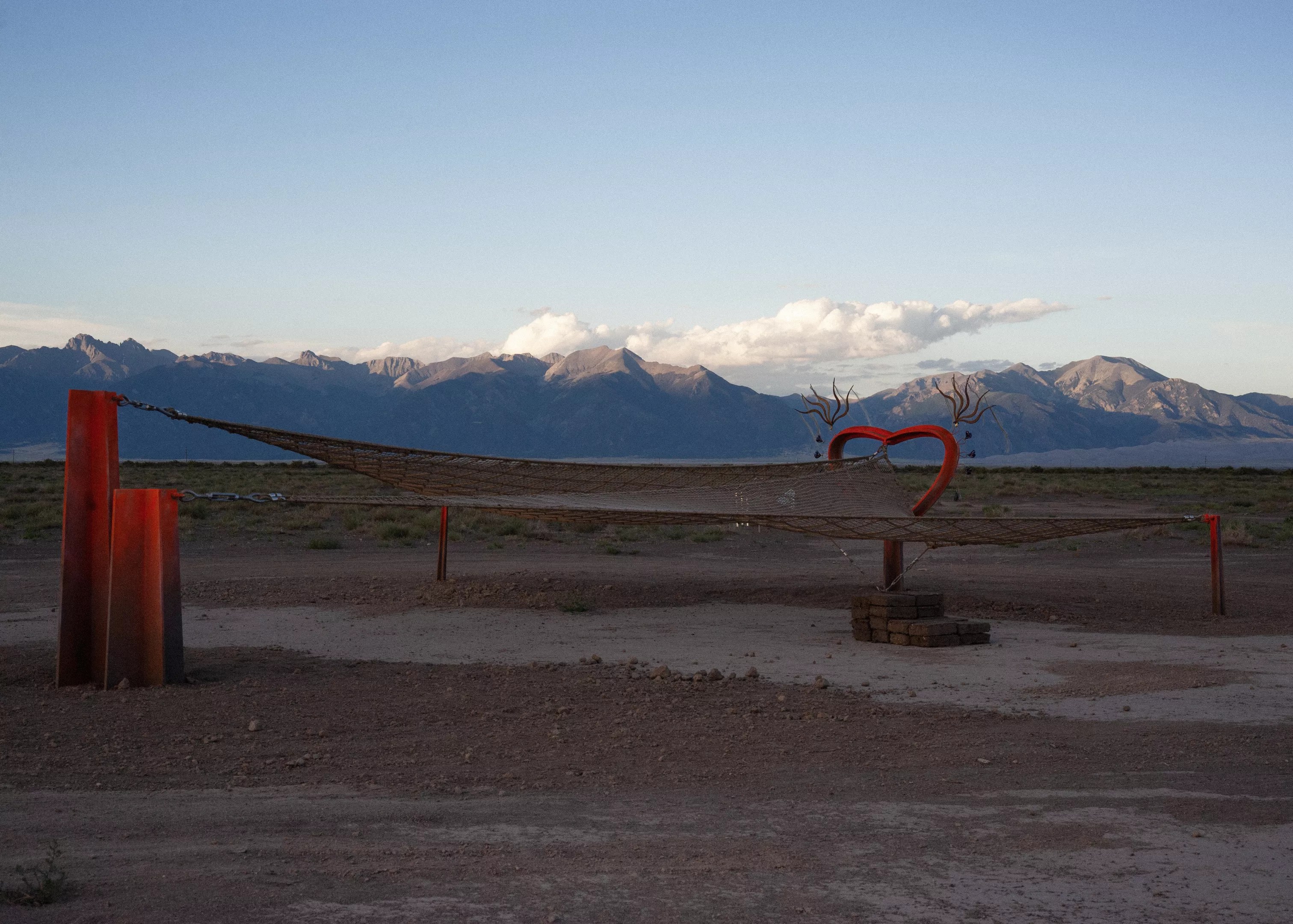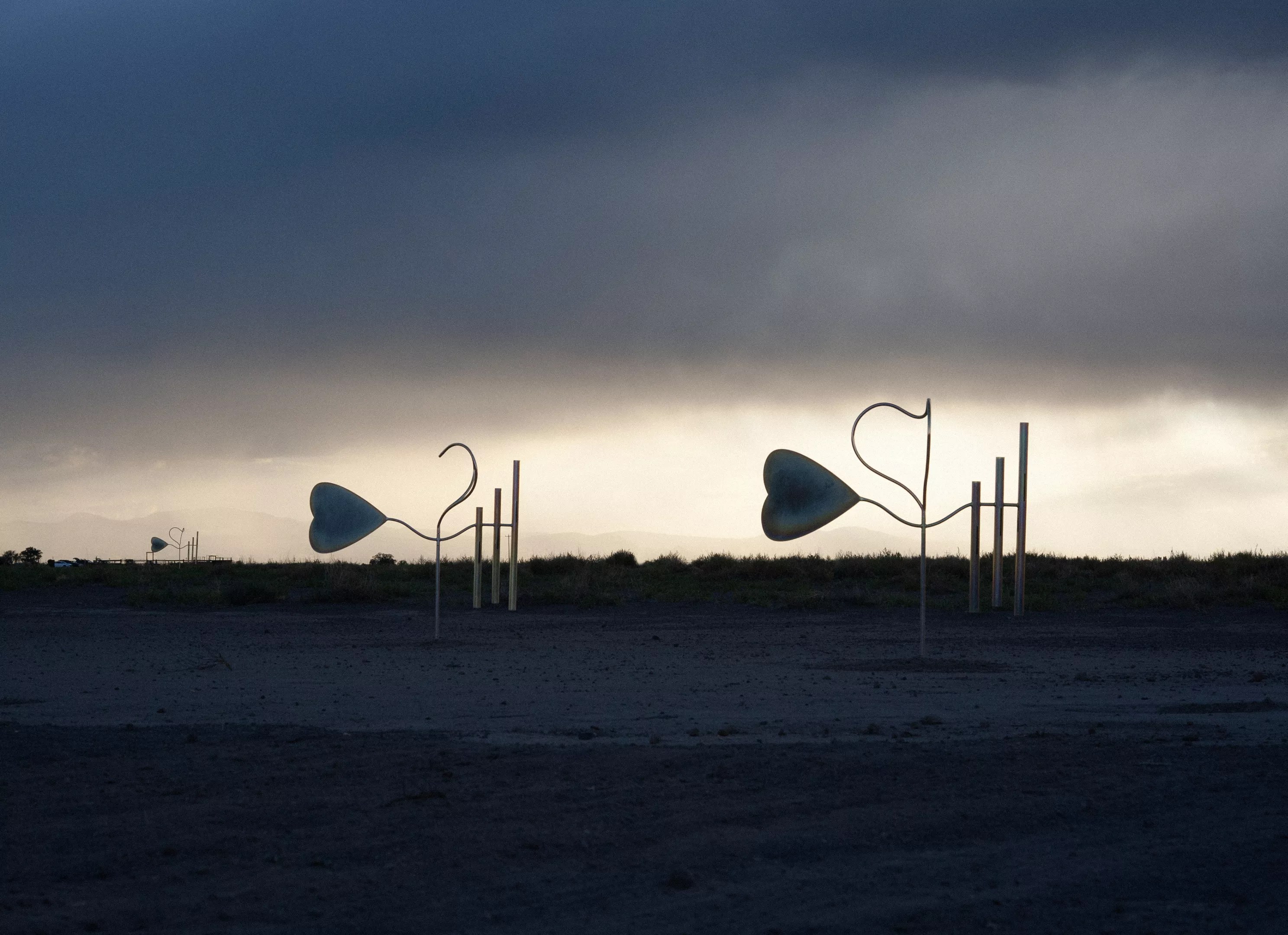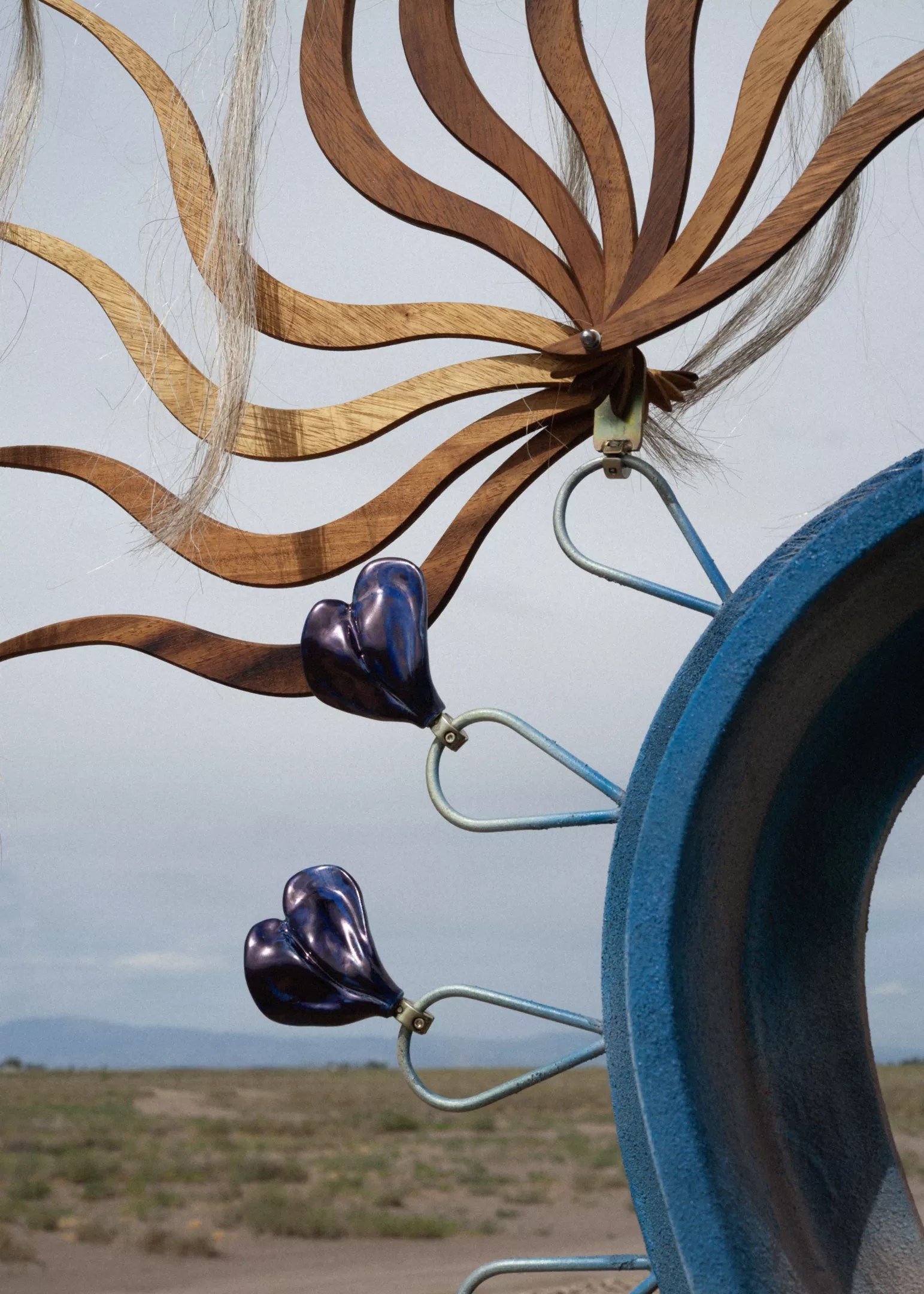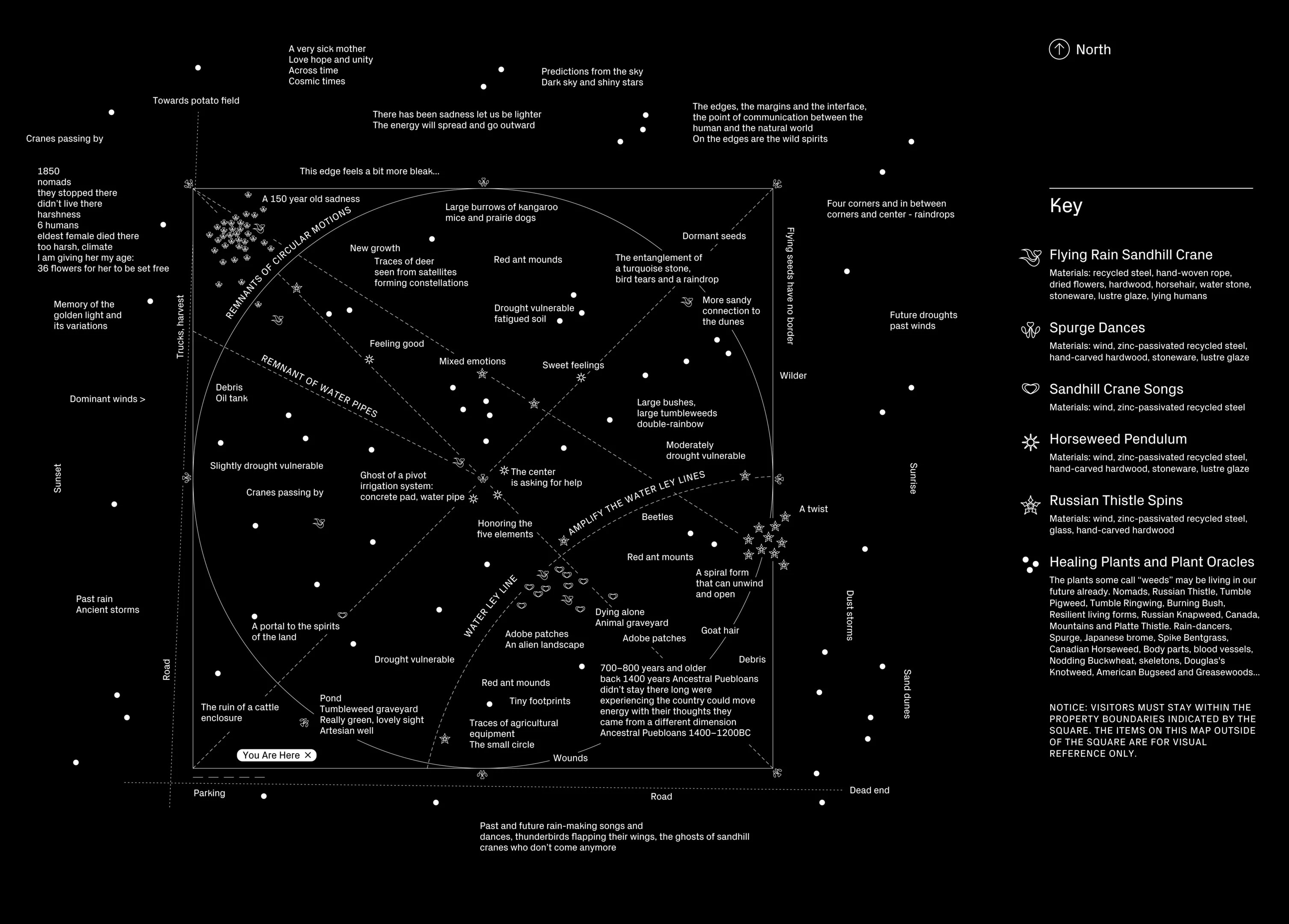
Marguerite Humeau

Audio By Carbonatix
Cortney Lane Stell, the visionary curator behind Black Cube Nomadic Art Museum, has taken on more than her share of challenging art installations in the eight years since the international art incubator emerged in 2015.
Along with numerous pop-up installations throughout the Denver area, Stell engineered such marvels as Desirée Holman’s Sophont in Action, a Sun Ra-esque ecstatic dance performance with handmade costumes and psionic helmets against a backdrop of video projections at Red Rocks Amphitheatre; the Institute for New Feeling’s Avalanche, a performance critiquing bottled water and its waste of resources carried out at night at the Denver Wastewater Management facility; German artist Andreas Greiner’s 24-feet-tall 3-D-printed anatomic sculpture of a Ross 308 boiler chicken hung within the grand hall of the Denver Public Library’s Central branch; and the list goes on.
But renowned artist Marguerite Humeau’s massive earthwork Orisons – an installation of 84 sculptures planted on 160 acres of barren, eroded land owned by the fourth-generation farmers at Jones Farms Organics in the San Luis Valley – outsizes them all, Stell says. “It’s the most challenging thing I’ve done in my life, and such a privilege,” she adds. “I can’t speak highly enough about this artist’s perseverance.” After more than three years of planning and implementing, Orisons (the word for “prayer” in Middle English) opens Saturday, July 29, near Hooper, Colorado, in the middle of nowhere.

Marguerite Humeau
Orisons opens with a free official party from 4 to 9 p.m. on Saturday, July 29, at the Frontier Drive-Inn (105 East County Road 11 North, Center) that includes tours of the installation, with rotating shuttles ferrying viewers to the remote site throughout the evening. At the Frontier, architect Ronald Rael will give tours of his 3-D-printed structures, called Skylos, at 4:30 p.m., followed by a panel discussion at 6 p.m. with Sarah Jones of Jones Farms Organics, Regina Lopez-Whiteskunk of the Montezuma Land Conservancy, and Cathy O’Neill of the National Resources Conservation Service, moderated by Black Cube ArtTable Fellow Angella d’Avignon. To close, curator Stell will moderate a conversation with Humeau, followed by a video projection show. There is also an option to ride a round-trip shuttle starting at Black Cube Headquarters in Englewood to and from Center; tickets can be found on Eventbrite.
Humeau, now in her thirties, grew up in the French countryside before leaving to study art in London, where she remains after having earned a master’s degree in Design Interactions at the Royal College of Art. What distinguishes her from other earthwork artists?
“She’s young, and she’s a rock star,” Stell enthuses. “The focus of her practice looks at an enormous range of time, from prehistory to imagined futures, stretching time while creating artworks wound between looking prehistoric to looking speculative. In the past few years, Humeau has shown at the Venice Biennale, in Sydney and at several other major museums, done outdoor commissions and joined White Cube, one of the biggest galleries in the world.
“She is a master of storytelling,” Stell continues, “breathing life into sculpture and creating conceptual works through the medium of installation.”

Marguerite Humeau
Stell sees the collaboration as a feather in Black Cube’s cap. “That she is in such an exciting moment in her career makes it a unique moment for this project,” she explains. “After getting so much success, to then pivot and choose to work with an organization like Black Cube that is not based in any major art city sector is rare.”
And the act of creating Orisons, a daunting project, is not the only challenge Humeau overcame. “Earthworks projects are mostly dominated by men on a large scale, as opposed to females, who are known to be more delicate and environmental in creating their earthworks,” Stell explains, citing Michael Heizer, who over the course of fifty years created one of the world’s largest installations with City in Nevada, and James Turrell, who reshaped an entire crater for one of his immersive light works.
But Humeau is joining those ranks. Stell notes that “Orisons is the largest earthwork to date by a female artist in the world.”
Behind each of Humeau’s biomorphic sculptural installations lies a trail of extensive research touching on numerous points of view. For Orisons, Stell says Humeau “basically met with every expert: farmers, agronomists, ornithologists, psychics, Indigenous communities and geomancers” to understand the mark of industrial agriculture on the land and “produce a work with as light a touch on the land as possible.”
“It’s a fallow plot of farmland,” she continues. “Located in the San Luis Valley, it’s a unique agricultural location in the Rocky Mountains, roughly the size of Israel, and the largest alpine valley in the world. It’s also the highest desert in the U.S., with unique geological qualities formed by the largest volcanic eruption in history.”

A detail of one of the many installations.
Marguerite Humeau
Humeau took the diverse information she gathered to map out the geological elements of the space and how they were used, as well as the footprint of history, cultures, wildlife and events in the valley that had passed through over eons. After mapping what Stell calls “the psychic vortex of all the different energies and traumas to the land,” Humeau and Black Cube collaborated to fabricate and install 84 sculptures.
There are two categories of sculptures. Seven are large-scale, abstract sandhill cranes in flight with interactive net wings that people can climb into to rest and merge with the landscape. Each massive bird, approximately thirty feet in length, is unique. The sandhill cranes, who nest near Monte Vista, have been migrating through the area since prehistory, Stell notes. “But now the wetlands are changing.” One day the majestic migrants could be a thing of the past in Colorado.
In contrast, the 77 kinetic, small-scale interactive sculptures, called “divination instruments,” twist and whistle in the dry winds that notably also carry volunteer seeds across the land to sprout nomadic vegetation new to the area. Humeau likens them to acupuncture needles, “aiding the release of restorative energies and histories,” Stell says.

Humeau’s map of Orisons.
Marguerite Humeau
Humeau’s focus is on the pitfalls of industrial agriculture, showing how mono-cropping rids soil of nutrients, while new agricultural groups in the San Luis Valley such as Jones Farm Organics are teaching farmers to diversify and plant soil-building cover crops. “When you look at Orisons, the land is completely depleted,” Stell notes. “Nothing except sage and weeds can grow, and then chemicals are sprayed to get rid of them. Now they are having brownouts in the valley.
“But soil scientists say these weeds on the land are doing something precious,” she continues. “They are almost like heroes, in an area at high altitude, in an extreme climate microcosm of climate change. These weeds – the spurge and Russian thistle – help hold down the topsoil so there is no dust bowl. Weeds are superheroes.”
It’s not a landscape people normally seek out “from a tourist’s perspective,” Stell adds. “It’s uncomfortable and even terrifying, but also sacred and poetic. The soil is so sandy, you need boots that cover your ankles. There’s no path and no shade in a harsh environment.”
But Stell believes a person must traverse the area to see and hear its secrets and experience nature in its most ravaged form. “The kinetics of the moving sculptures makes sounds that are small and golden,” she says. “There are no pathways to walk, no pre-scripted interaction other than the net wings on the cranes. It’s all about wandering and experiencing the landscape with curiosity.”
Orisons opens to the public with a free party from 4 to 9 p.m. Saturday, July 29, at the Frontier Drive-Inn, 105 East County Road 11 North, Center. The installation is open through June 30, 2025. Reservations to see Orisons can be made at orisons.art/visit.